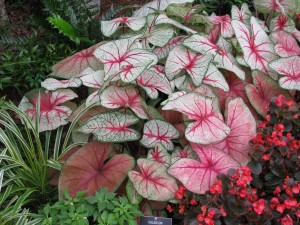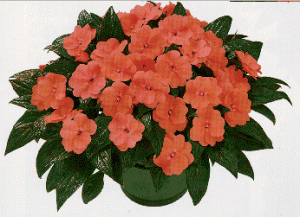Forcing Bulbs and Branches for Winter Color
If the winter silhouettes of trees, red berries and white snow are not enough horticultural beauty for you over the next several months, try forcing bulbs and branches for early bloom. These early flowers will easily brighten up any winter day.
To force bulbs, first purchase high quality bulbs. Tulips, daffodils, hyacinths, crocus, scilla, lily-of-the-valley all work for forcing. Some bulbs, like paperwhites, do not need a cold treatment, but most fall bulbs (means normally planted in the fall to bloom in spring) require a period of cold before they will bloom. Don’t mix species of bulbs because they have different forcing times and probably won’t bloom together.
Begin by potting the bulbs in clean, sterile clay or plastic pots. Do not bury the bulbs; leave the “noses” of the bulbs exposed. The soil should be a mixture of good garden loam (three parts), peat moss (two parts), and sand (one part). You can also use a commercial soil-less mix, but be careful the medium doesn’t stay too wet. Don’t worry about soil fertility or feeding bulbs because they have enough stored food to flower one time.
Plant the bulbs close together in the pot. Usually 6 tulip bulbs, 3 hyacinths, 6 daffodils, or 15 crocus, will fit into a 6-inch pot. Place the flat side of the tulip bulb next to the rim of the pot since the largest leaf will always emerge and grow on that side, producing a more desirable looking pot. Fill the pot loosely with soil. Don’t press the bulbs into the soil. Allow 1/4-inch of space at the top of the pot so it can be watered easily. Water immediately upon planting, and never allow the soil to become dry.
Bulbs require a cold temperature treatment of 35– 48 degrees F for a minimum of 12–13 weeks. This cold treatment can be provided by either in a cold frame, an unheated attic or cellar, or even your refrigerator’s vegetable section. In the refrigerator, the pots should be covered with plastic bags that have had a few breathing holes punched in them. With cold frames, cover pots with deep mulch for insulation. The bulbs must not be allowed to freeze.
If you are starting this process in January, you won’t get to bring bulbs indoors until March, but bulbs should bloom quickly once brought indoors. (Ideally, this process should be started in October or November to get bulbs that will bloom all winter). A temperature of 50–60 degrees F is preferred for the first week or until the shoots and leaves begin to expand. Then, they can be moved to warmer locations such as the living room. Avoid direct sunlight. Once the bulbs are blooming, move the pots to a cool location each night. The cooler temperatures will prolong the life of the flowers. Small pots of crocus can even be placed in your refrigerator overnight.
Discard tulips, narcissus, crocus, and hyacinths after flowering as they normally are “spent” and are not likely to ever flower satisfactorily again.
Hyacinths, crocus, and narcissus also can be forced in water. Special clear, glass vases are made for hyacinths or crocus. Place the bulb in the upper portion, water in the lower portion. Keep the vase in a cool, dark room (preferably under 50 degrees F) for four to eight weeks until the root system has developed and the top elongates. At this point place it in a bright window, where the plant soon will blossom.
If the whole cold period process sounds intimidating, try using bunch-flowering narcissus, such as Paper White and Soleil d’Or, that don’t require a cold period. Grow them in shallow pans of water filled with crushed rocks or pebbles. Secure the bulbs in the pebbles deeply enough so that the basal plate is in contact with the water. Keep them in a cool, dark room for several weeks to ensure root growth, and then place in a sunny location. Each bulb will send up several flower stems bearing many tiny blossoms. Discard these plants after flowering.
Another easy option is amaryllis. The amaryllis is a tender bulb that will bloom without special treatment. Pot it in light, rich soil in a pot that is only 1–2 inches larger in diameter than the bulb. Plant so the upper half of the bulb is exposed above the soil. After watering thoroughly, allow the soil to become quite dry. Water more frequently after the flower stalk appears, but never water when the soil is already moist. Put the plant in a warm, sunny spot until the flower buds show color, and then move it out of direct sunlight.
Another easy option for getting spring blooms indoors during the winter is to cut branches of spring flowering plants and place them indoors in water. Some cherries and witch hazel will start blooming now. Pussy willows, winter hazel (corylopsis), flowering quince, forsythia, and any other spring blooming shrub can be brought indoors about a month before they normally flowers outdoors. Place stems in water and change the water every few days to keep it fresh and oxygenated. Place in a warm, sunny location and watch the wonderful process of opening buds. You can even force non-flowering stems, like beech. An unfurling beech leaf bud is subtle but as pretty as most flowers. Some branches, like red-twig dogwood, will root in water indoors and can be planted outdoors as soon as the ground warms up in the spring. So not only will you enjoy flowers and leaves during the winter, you’ll become an amateur propagator!







